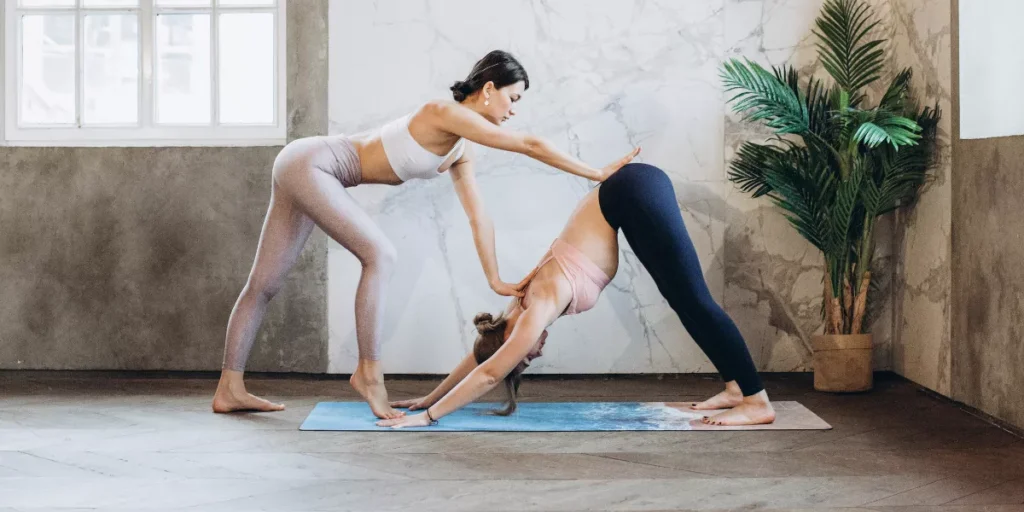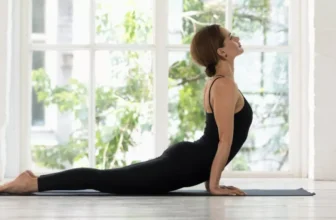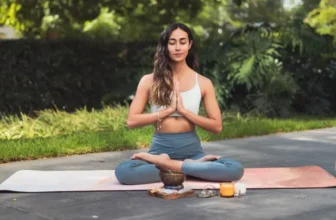

If you’ve ever wondered whether yoga could be the key to achieving better posture, the answer might surprise you. The benefits of incorporating yoga into your routine extend beyond mere flexibility and relaxation. By focusing on specific poses and mindfulness techniques, you can begin to address the root causes of poor posture and start making positive changes that impact your overall well-being. So, how exactly can yoga help you stand taller and move with more ease?
Importance of Good Posture
Having a strong foundation in good posture is crucial for overall physical health and preventing strain on your muscles and joints. Proper posture helps align your body in a way that reduces unnecessary stress on your spine, muscles, and ligaments. When you maintain good posture, you’re less likely to experience discomfort or pain in your back, neck, and shoulders.
Additionally, good posture contributes to better breathing and circulation. By standing or sitting up straight, you allow your lungs to fully expand, improving oxygen flow throughout your body. This, in turn, enhances your energy levels and overall well-being. Furthermore, proper posture can positively impact your confidence and how others perceive you. When you stand tall with your shoulders back and head held high, you exude self-assurance and professionalism.
Incorporating practices like yoga into your routine can help strengthen the muscles that support good posture, leading to improved balance and alignment. By focusing on your posture, you can enhance your physical health and overall quality of life.
Understanding Postural Misalignments
To comprehend postural misalignments, assess how your body positioning affects your overall alignment and balance. Pay attention to how you stand, sit, and move throughout the day. Notice if you tend to slouch at your desk, lean to one side while standing, or hunch your shoulders forward. These habits can lead to imbalances in your muscles and joints, resulting in postural misalignments.
Common postural misalignments include forward head posture, rounded shoulders, anterior pelvic tilt, and uneven hips. Forward head posture, where your head juts forward from your shoulders, can strain your neck and upper back. Rounded shoulders can cause tight chest muscles and weak upper back muscles. Anterior pelvic tilt, where your pelvis tilts forward, may lead to lower back pain. Uneven hips can affect your gait and cause discomfort in your lower body.
Benefits of Yoga for Posture
Improving your posture through regular yoga practice can lead to significant benefits for your overall alignment and balance. Yoga helps strengthen the muscles that support proper alignment, such as the core, back, and shoulder muscles. By engaging in poses that focus on spinal extension and alignment, you can improve your posture by reducing slouching and promoting a more upright position.
Additionally, yoga increases body awareness, allowing you to notice and correct poor habits that contribute to postural misalignments. Through mindfulness and intentional movement, you can adjust your posture throughout the day, not just during yoga practice. This heightened awareness helps prevent the development of chronic postural issues that may lead to pain and discomfort.
Moreover, practicing yoga can enhance flexibility and mobility in your joints, making it easier to maintain good posture. Improved flexibility in areas like the hips and shoulders can alleviate tension that contributes to poor alignment. Ultimately, incorporating yoga into your routine can positively impact your posture, leading to better overall physical health and well-being.
Key Yoga Poses for Better Alignment
By incorporating specific key yoga poses into your practice, you can actively work towards improving your alignment and posture. Certain yoga poses are particularly beneficial for enhancing posture by strengthening the core muscles, lengthening the spine, and promoting overall body awareness.
One essential pose for better alignment is Mountain Pose (Tadasana). This foundational pose focuses on grounding your feet, lengthening the spine, and rolling the shoulders back, which helps in improving posture by aligning the body properly.
Warrior II (Virabhadrasana II) is another key pose that can aid in better alignment. This pose helps open the hips, strengthens the legs, and encourages the shoulders to align over the hips, promoting a straighter posture.
Additionally, Cat-Cow Pose (Marjaryasana-Bitilasana) is beneficial for spinal flexibility and alignment. Moving through these poses with breath synchrony can help release tension in the spine and improve overall posture.
Mindfulness Practices for Posture Awareness
Enhance your posture awareness through mindfulness practices. By incorporating mindfulness into your daily routine, you can cultivate a deeper connection between your mind and body, leading to improved posture. Start by setting aside a few minutes each day to focus on your breath and body sensations. This simple practice can help you become more attuned to how you sit, stand, and move throughout the day.
As you go about your activities, bring mindfulness to the forefront by checking in with your posture regularly. Notice if you’re slouching or hunching over and gently adjust your position to align your spine properly. Mindfulness can also help you identify any areas of tension or discomfort in your body that may be affecting your posture.
Additionally, practicing mindfulness can increase your overall body awareness, making it easier to recognize habits or behaviors that contribute to poor posture. By being present in the moment and paying attention to your body’s signals, you can make conscious choices to improve your posture and prevent discomfort or pain in the long run.
Yoga













